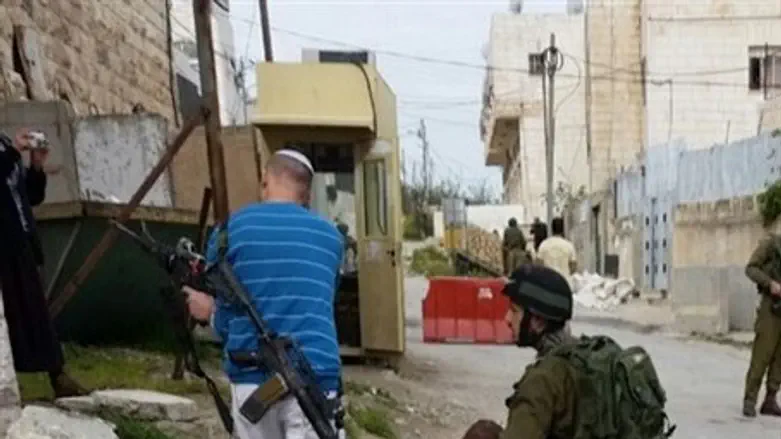
The inquiry into last Thursday’s fatal shooting of a wounded Arab terrorist has revealed some important clues into the incident that drew sharp condemnations from Prime Minister Binyamin Netanyahu and Defense Minister Moshe Ya’alon.
According to a report on Israel Army Radio, the initial investigation into the shooting has found that 11 minutes elapsed from the time the terrorist was neutralized, until the fatal shooting in question.
The shooting, which was captured on film by an Arab activist associated with the B’Tselem organization, created an international storm last week after the video went viral.
The report on Israel Army Radio also provided details on the army’s handling of the shooting. Contrary to claims made after the video’s release, the incident had in fact been reported through the army’s chain of command prior to the release of the B’Tselem video, with officers filing a complaint against the soldier even prior to the video's publication.
While the soldier responsible for the shooting has claimed that he believed the terrorist was wearing a suicide bomb, investigators discovered that he had made statements suggesting revenge was the motive.
One soldier reportedly told authorities that the soldier under investigation had earlier said to him that “a terrorist who stabs one of our comrades needs to die”. The witness also testified that he tried to calm the soldier involved in the incident, telling him the soldier wounded in the terror attack was lightly injured and would be fine.
After the shooting the platoon commander questioned the soldier, asking him “Why did you shoot?” The soldier responded by saying that “a terrorist who stabs needs to die”. The officer then removed the soldier from the scene and reported the incident to his commander.
The soldier’s attorney, Eyal Besserglick, responded that people on the scene of the attack “were yelling ‘he’s still moving, he might have a bomb’.” He also noted that the terrorist was wearing a heavy coat on a warm day, often a sign of a concealed explosive device.
“What’s more, before this [shooting] there was a stabbing attack, and the person [involved] was there with a coat, so what do you expect? That afterwards this soldier would be killed along with his friends, so that we can mourn our dead?”
“He had no choice but to act as he did, otherwise he [might have] lost his life and those of his comrades, whom he tried to save.”